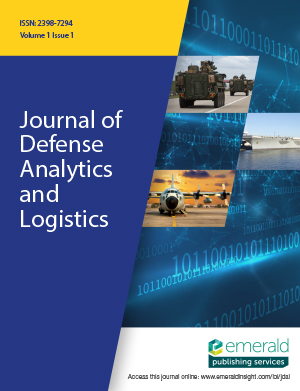With a “guest” introduction by Kevin E. Williams, Director for Studies, Analyses and Assessments for Headquarters, US Air Force, the Journal of Defense Analysis and Logistics (Volume 1 Issue 1; ISSN 2399-6439) made its inaugural on-line debut in late 2017. Published by the US Air Force Institute of Technology’s Center for Operational Analysis (AFIT COA) and delivered on-line by Emerald Publishing Services, this Open Access peer-reviewed semi-annual technical journal considers a broad range of topics across the fields of logistics, operations research, and supply chain management. Each research article published in the journal must contribute directly to the art and science of national and/or international defense, and highlight the development of innovative new ways of thinking about defense analysis and logistics.
Co-Edited by Benjamin T. Hazen, Ph.D. and Raymond R. Hill, Ph.D – both members of AFIT’s Department of Operational Sciences – the journal’s Editorial Board is comprised of US and international industry, academia, and defense experts from the fields of supply chain management, acquisition, operations research, economics, marketing, industrial engineering, logistics management, analytics, and international business. Being peer-reviewed, published articles are theoretically sound, methodologically rigorous and practically relevant. International in scope, submissions from all countries are welcomed. In a SOLE HQ telephone conversation with one of the co-editors, the JDAL is meant to serve as a vehicle to bring the defense analytics and logistics communities closer together while simultaneously infusing them with new theory and application.
The topics presented in the journal range in formats as diverse as leadership editorials, technical papers, research papers, abstracts, and reports of current (and past) studies and projects. To read the inaugural issue, go to https://www.emeraldinsight.
If you’re ‘of a mind’ that leans toward defense analytics and logistics, consider not only reading but also contributing to your technical “community” by adding JDAL to your professional reading list and/or technical library.
